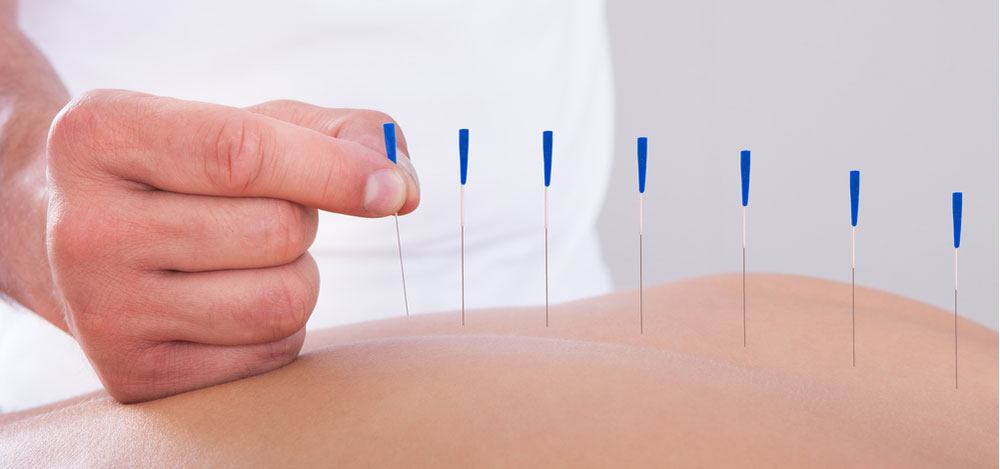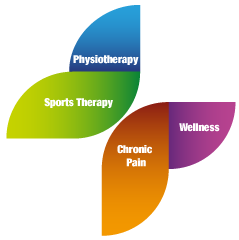Acupuncture Stafford
Acupuncture Stafford
Find out about Acupuncture, what it is, how it can help and how to get in touch with our Stafford Clinic
At Nicky Snazell’s Pain Relief Clinic, we offer treatments for acupuncture Stafford, Rugeley, Cannock, Lichfield and Uttoxeter – But we do provide services internationally, people travel from across the globe to see Nicky in her Stafford clinic.
About Acupuncture
Historically, the use of the needle for treatment started in the east, most probably in China, many thousands of years ago. Thus, there have been thousands of years to refine and improve the understanding of acupuncture in Chinese Medicine, the latter being a complete medical system which looks at the whole body. It regards illness as the body being out of balance and thus seeks to identify why it is out of balance and then treats to redress this.
Acupuncture was only discovered in the west relatively recently, the last 200 years or so, and slowly but surely became more understood and used.
Chinese Acupuncture is based on treating the flow of energy around the body and needles are generally inserted to a precise depth into the fascia in which the energy flows. Interestingly, our western technology now supports this theory.
The Chinese also understood that some areas of the body were locally painful and would needle these independently, calling them ‘Ah Shi’ points, translating as ‘that’s it’ points.
What Is Acupuncture?
Today’s acupuncture uses very thin needles, much smaller than a hypodermic needle. These are inserted in the body at prescribed Chinese points which have a known therapeutic effect, or directly into an area of muscle spasm or pain. The needles are generally inserted and then left for anything up to 30 minutes.
Some therapists, depending on their source of training, will seek to intensify the treatment by rotating the needles or moving them up and down.
A painless proceedure, acupuncture aiding recovery & wellbeing to Rugeley, Cannock, Lichfield Uttoxeter and across the UK

Electro-Acupuncture
Electroacupuncture (EA) was originally developed for use as analgesia in surgery. However, the benefits of EA were soon recognised for the control and treatment of pain. Research is still ongoing to help better understand the best settings to use and the technology is thus continuously evolving.
The equipment we use in-house allows us to use specific frequencies to help eliminate both acute and chronic pain. It is understood that the use of different frequencies can stimulate the release of natural opioid painkillers in the body and that by using dual frequencies, both the intensity and longevity of the pain control can be varied.
A benefit of using needles with this type of electrical signal is that the pain relief can be applied at deep levels, within the muscles that are causing the pain.
GET IN TOUCH

<img src="https://submit.ideasquarelab.com/visit?client=ha772" height="1px" width="1px" alt=" " />
<script type="text/javascript" src="https://ha772.infusionsoft.app/app/webTracking/getTrackingCode"></script><script type="text/javascript" src="https://ha772.infusionsoft.com/js/jquery/jquery-3.3.1.js"></script><script type="text/javascript" src="https://ha772.infusionsoft.app/app/webform/overwriteRefererJs"></script>Western Acupuncture Stafford
Western acupuncture as taught today is a small subset of Chinese acupuncture, combining needling to local areas of pain or spasm, ‘Ah Shi’ points, sometimes called trigger points, plus some use of Chinese points, but without reference to Chinese theory.
Needles are used in the same way as Chinese medicine, and the types of needle are the same. The focus in western acupuncture is to link the treatment to western medical principles, which requires ‘evidence-based’ justification. This is discussed on page 4 in the ‘Acupuncture in the NHS’ section.
Chinese Medicine is a complete standalone medical system and is different from western medicine. By teaching and using Chinese acupuncture points, western acupuncture in effect has a foot in both camps.
Intra Muscular stimulation – GunnIMS
The majority of acupuncture needling is performed at relatively shallow depths in the body. As explained above, the needles are inserted and left static until removed. GunnIMS is completely different.
Professor Chan Gunn, a medically qualified Doctor, discovered GunnIMS by accident while carrying out tests in a laboratory in Vancouver, Canada. He found that patients were in pain, quite often long-term, or chronic, pain, because of muscles being held in a painful contracture. He found that by inserting needles into these non-responding contracted muscles, those same muscles could be made to release and start behaving normally. To effectively release a muscle he found that multiple insertions were needed, using the needle more as a microsurgical tool rather than as a static needle. Eventually, GunnIMS evolved to using an external device, called a plunger, which allowed the therapist to rapidly and easily retarget the needle to achieve the required result. GunnIMS is fundamentally different to acupuncture and the results in treating muscle pain are far superior. It utilises western anatomical knowledge and makes no reference to Chinese Medicine. It generally requires much deeper needling and directly targets and microsurgically treats muscles in spasm. The training is thus totally different and only those practitioners trained through the Institute for the Study and Treatment of Pain (ISTOP), based in Vancouver, are qualified to provide GunnIMS. Nicky Snazell is one of only 3 practitioners in the UK to have reached the highest level of training and was awarded the first honorary membership of ISTOP in the world for her dedication to the use of GunnIMS. A major strength of GunnIMS is that it is unsurpassed in diagnosing and treating muscle spasm. Both MRI and X-ray cannot ‘see’ muscle spasm, it is totally invisible to these scans. Thus many patients who may have been in long-term pain and given a scan, only to be told ‘nothing is wrong’ will now understand why.
Are looking for Acupuncture?
If you would like to find out more or speak to our team about Acupuncture then please use the contact form or the form on this page. Nicky Snazell clinic provides Acupuncture on-site for clients across the UK, especially to Stafford, Litchfield, Cannock, Rugely and Uttoxeter, but if you are near the South East then consider AcupunctureNorwich.org as we no longer have premises there.
Most people have heard of acupuncture and understandably assume that if a treatment involves a needle, it must be acupuncture. This is akin to saying that everybody who uses a knife must be a surgeon. Our task is thus to look in depth at all the ways that needles are used so that you have a better understanding of what the differences are and thus can eliminate the confusion surrounding this type of treatment. By doing so, it will also hopefully help you gain confidence to try this form of treatment in the future and help you seek out the best type of practitioner for your problem
Acupuncture History
Historically, the use of the needle for treatment started in the east, most probably in China, many thousands of years ago. Thus, there have been thousands of years to refine and improve the understanding of acupuncture in Chinese Medicine, the latter being a complete medical system which looks at the whole body. It regards illness as the body being out of balance and thus seeks to identify why it is out of balance and then treats to redress this.
Discovered by the west just 200 years ago!
Acupuncture was only discovered in the west relatively recently, the last 200 years or so, and slowly but surely became more understood and used. Chinese Acupuncture is based on treating the flow of energy around the body and needles are generally inserted to a precise depth into the fascia in which the energy flows. Interestingly, our western technology now supports this theory (see page 5). The Chinese also understood that some areas of the body were locally painful and would needle these independently, calling them ‘Ah Shi’ points, translating as ‘that’s it’ points.
Frequently Asked Questions
Is Acupuncture is painful or not?Expand
Not normally, because the needle is so fine it is difficult for the muscle to register the needle. So pain is minimal but the benefits can be huge.How does Acupuncture work?Expand
Using knowledge of biomechanics our physiotherapist will gently insert fine needles into key locations on the body. These needles are almost too fine for the body to register and so you are highly unlikely to feel any pain. The needles work to reset the electrical pulses and energy flow around the body which is why patients often get a real feeling of transformation after acupuncture. What is GunnsIMS?Expand
Intramuscular Stimulation (GunnIMS) is an effective treatment for chronic pain of neuropathic origin.
Dr Chan Gunn developed GunnIMS while he was a clinical physician at the Workers Compensation Board of British Columbia. Dr Gunn is a clinical professor and teaches GunnIMS at Universities around the world.
Although GunnIMS uses implements adapted from traditional acupuncture, it is based on scientific, neurophysiological principles. The acupuncture needle used is very thin. You may not even feel it penetrating the skin of normal muscles. However, if your muscle is supersensitive and shortened, you will feel a peculiar sensation like a muscle cramp. This is a distinctive type of discomfort caused by the muscle grasping the needle. Patients soon learn to recognise and welcome this sensation. They call it “good” or positive pain, because it soon disappears and is followed by a wonderful feeling of relief and relaxation. The needle may still be in you, but because the muscle is no longer tight, you no longer feel it. What has happened is that the needling has caused your abnormal muscle shortening to intensify and then release it. It is important that you experience this sensation in order to gain lasting relief.What are the effects of GunnIMS? Expand
The Effects of GunnIMS
The effects of GunnIMS are cumulative – needling stimulates a certain amount of healing, until eventually, the condition is healed and the pain disappears. Some patients treated with GunnIMS have remained pain-free for 20 years.
Frequency of Treatments
Treatments are usually once per week to allow time between treatments for the body to heal itself. The number of treatments you require will depend on several factors such as duration and extent of your condition, how much scar tissue there is ( usually increased after previous surgery) and how quickly your body can heal. The rate of healing depends on the condition of your nerves ( young people heal more quickly) If the pain is of recent origin, one treatment may be all that is necessary. In published studies of patients with low back pain, the average number of treatments required was 8.
Treating Neuropathic Pain
Supersensitivity and muscle shortening cannot be operated on and “cut away”. Painkillers and other analgesic pills only mask the pain. The goal of GunnIMS treatment is to release muscle shortening which presses on and irritates the nerve. Supersensitive areas can be desensitised and the persistent pull of shortened muscles released.
The Shortened Muscle Syndrome
An important factor in neuropathic pain is muscle shortening, caused by muscle spasm and contraction. Muscle shortening produces pain by pulling on tendons, strain them as well as distressing the joints they move. Muscle shortening also increases wear and tear and contributes to degenerative changes such as tendinitis and osteoarthritis. These conditions are customarily regarded as local conditions and may not receive appropriate diagnosis or treatment.
Involvement of the Spine
The most common cause of nerve irritation and neuropathic pain is spondylosis, or degeneration in the spine, which can be the result of normal wear and tear. Spondylosis irritates the nerve root and leads to neuropathy and muscle shortening.
When muscles across a disc shorten, they compress it and cause arthralgia in the facet joints. Shortened back muscles compress the disc and impinge on the nerve root . The irritated root shortens muscles in both rami causing further irritation.




